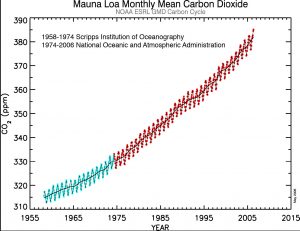Redefining vocabulary in science instruction
If a teacher could only focus on one instructional change during the transition to the Next Generation Science Standards, our suggestion is this: redefine how students are asked to learn vocabulary.
In the past, teachers have used vocabulary to frontload instruction, thus driving the instruction for the unit. Frontloading of instruction involves teaching students the meaning of words, providing them with opportunities to see those words in action and then use the words in context. Unfortunately, this is not the way that scientists work to solve problems. As explained by Joanne K. Olson in The Science Representation Continuum “Scientists do not begin with vocabulary words and try to figure out where to apply them in nature. Instead, they begin with a puzzling phenomenon that they attempt to explain. Terminology is developed when the scientist has a need for those terms, and that occurs when the scientist must try to convey the idea of phenomenon efficiently to others.”
Olson goes on to explain that students learn and retain the information best when presented in a manner that moves students from a concrete representation to a more abstract representation and then back again. When vocabulary is based in text it falls under “abstract” on the continuum. By first utilizing concrete experiences and investigation, students have the opportunity to construct their own understanding of the word and make sense of an abstract science concept.
What does it look like when students are discovering vocabulary?
Instruction begins with a concrete representation of the concept and moves to the abstract representation. This allows students to construct knowledge about the phenomena, the concepts, and the related vocabulary words. This provides students with the language they need to communicate and discuss their findings with others. Through this process, student “earn the word” through inquiry-based activities that are centered around the phenomena.
The Traditional Approach
As we consider standard MS-LS1-6 (Iowa 7th grade) “Construct a scientific explanation based on evidence fro the role of photosynthesis in the cycling of matter and flow of energy into and out of organisms” or HS-LS1-5 “Use a model to illustrate how photosynthesis transforms light energy into stored chemical energy” let’s look at some of the definitions that, traditionally, we might have started with.
Chloroplast – a small organelle that contains chlorophyll and other pigments found in plants that carry out photosynthesis.
Chlorophyll – a green pigment, present in all green plants, responsible for the absorption of light to provide energy for photosynthesis.
Photosynthesis – the process in which green plants use energy from the sun to transform water, carbon dioxide, and minerals into oxygen and organic compounds.
A student could easily “learn” these definitions and even get all of them correct on a summative assessment but still not really know how the process of photosynthesis works, why it is relevant nor understand why it would be important to know this process.
Vocabulary “redefined”
Now, let’s consider those same standards but in a manner that moves them from a concrete representation to an abstract representation. Students are presented with the phenomena of leaves changing color and falling in the autumn. Questions generated from this phenomena likely would include: where do the colors of leaves come from? Why do they change? How do they change? How does the tree survive over the winter with no leaves? What impact does trees losing leaves have on our environment?
Students then begin to develop their testable claims and investigate to p rovide evidence to answer some of the above questions. Students could investigate photosynthesis through inquiry based activities such as measuring bubbles coming off of elodea as described in this lab. Students could also investigate the pigment that is in the leaf of a deciduous tree such as described in this leaf chromatography activity. Students could also watch videos such as the one by NASA Goddard in which carbon dioxide release and absorption is made visible over the course of a year. Finally, students could analyze data sets regarding carbon dioxide in the atmosphere over time such as this one to the right:
rovide evidence to answer some of the above questions. Students could investigate photosynthesis through inquiry based activities such as measuring bubbles coming off of elodea as described in this lab. Students could also investigate the pigment that is in the leaf of a deciduous tree such as described in this leaf chromatography activity. Students could also watch videos such as the one by NASA Goddard in which carbon dioxide release and absorption is made visible over the course of a year. Finally, students could analyze data sets regarding carbon dioxide in the atmosphere over time such as this one to the right:
In addition to other activities that could occur during the learning, during these activities students would need to communicate and discuss with each other. Thus creating a need for the vocabulary (again, they have “earned the word”). Along with additional investigations, and a class discussion and sharing of information, students would truly develop an understanding of photosynthesis (including the meaning of the words above) and the role it plays in under the Energy and Matter crosscutting concept. The progression of the understanding started with the concrete representations and moved the students into the abstract representations through planning of the sequence of activities.
While at times overwhelming, the transition to the Next Generation Science Standards are just as much about the way we teach science as they are what science we teach. The time has come to “redefine vocabulary” and allow the instruction to drive the words and not the other way around.
Help students “earn their words” and develop a deep understanding of vocabulary!

